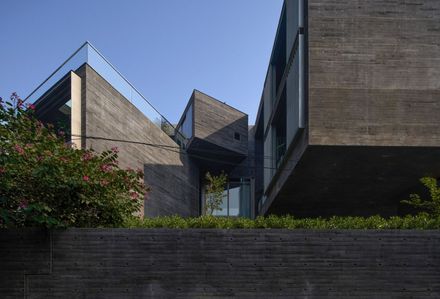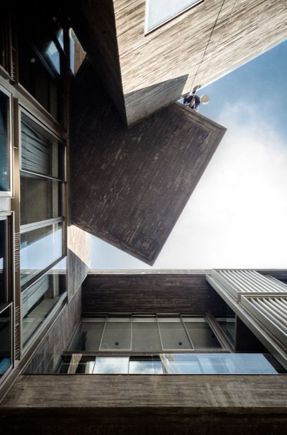
The Three Mashrabiyas House
ARCHITECTS
Matra Architects & Rurban Planners
CONTRACTORS
Incredible Housing Developers Ltd
INTERIOR DESIGNERS
Rajiv Saini & Associates
LEAD ARCHITECTS
Verendra Wakhloo
ELECTRICALS
Lirio Lopez
ARCHITECTURE
Verendra Wakhloo, Ankit Jain, Ankit Tomar, Gautam Tanvar, Apurva Tripathi, Amrita Walia
STRUCTURE
Optimal Consultancy Services Pvt Ltd
BRASSWORK
Ferrous Designs
MODEL MAKER
Mukesh Kumar
LANDSCAPE DESIGN
Matra Architects
3 D VISUALIZER
Abhishek Chauhan
PHOTOGRAPHS
Edmund Sumner, Sergio Ghetti, Ankit Jain
AREA
1630 M²
YEAR
2021
LOCATION
New Delhi, India
CATEGORY
Houses
Today, under immense pressure from the ever-increasing population and congestion of urban fabric, the realization of a "regenerative" builtenvironment seems to be a distant dream.
However, cities are trendsetters for emerging orders that incite meaningful paradigms and could even foster a change in future building regulations.
Such has been the case in the past with the mandatory stilt parking, introduced in Delhi a decade ago, for plots below 1000 sqm, which arguably has posed a challenge to the development of a house that was once connected to the ‘ground’ and provided a perceivable balance between open and built-up areas.
Residential architecture conceived along plotted developments commonly engages strongly with the design of the "skin" of the building, and designers often ignore the possibilities of exploring innovative building typologies.
Free of familiar attachments and ambitions of styling facades, this house, alongside a series of recent residential projects located in the dense urban fabric of Delhi, attempts to reintroduce experiential qualities and spatial nuances of living in a ‘house’.
The interpretation of the client’s brief of designing two apartments derives a strong reference from the form of a ‘Mashrabiya’, traditionally an integral part of the Arabic lifestyle.
The proposed three extensions to the main linear building volume are perceived as an interface with the external environment and overlook the street, the courtyard, and the terraces while maintaining the indoor privacy of the occupants.
These colossal insulated concrete protrusions of varied size ensure that during the day, parts of the large, exposed building surfaces are shaded.
Traditionally, ‘Mashrabiya’ was enclosed with carved lattice work in wood, while the proposed ‘Jali’, constructed in lightweight metal, is used to control daylight, and ventilation, reduce energy consumption, and create beauty.





















